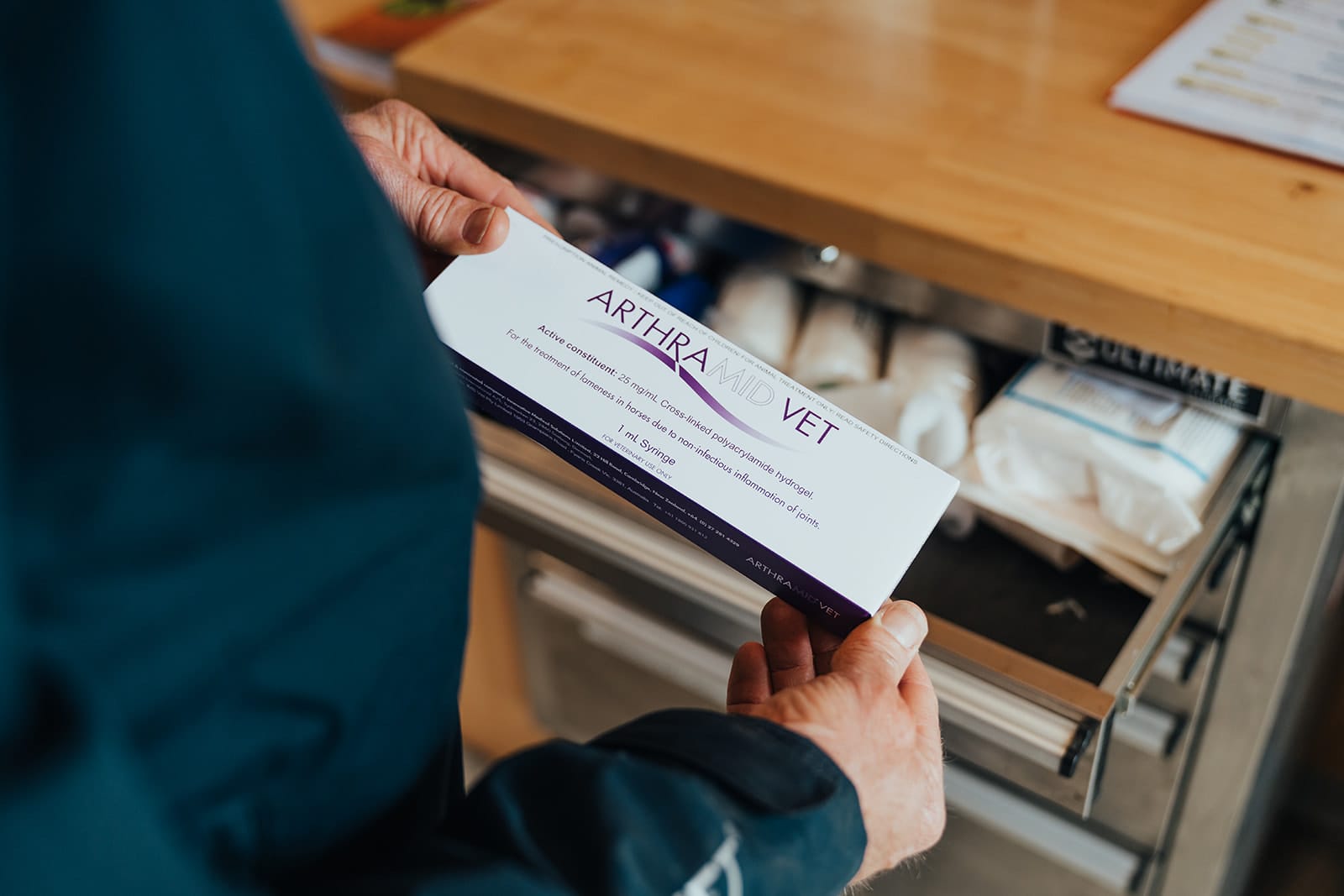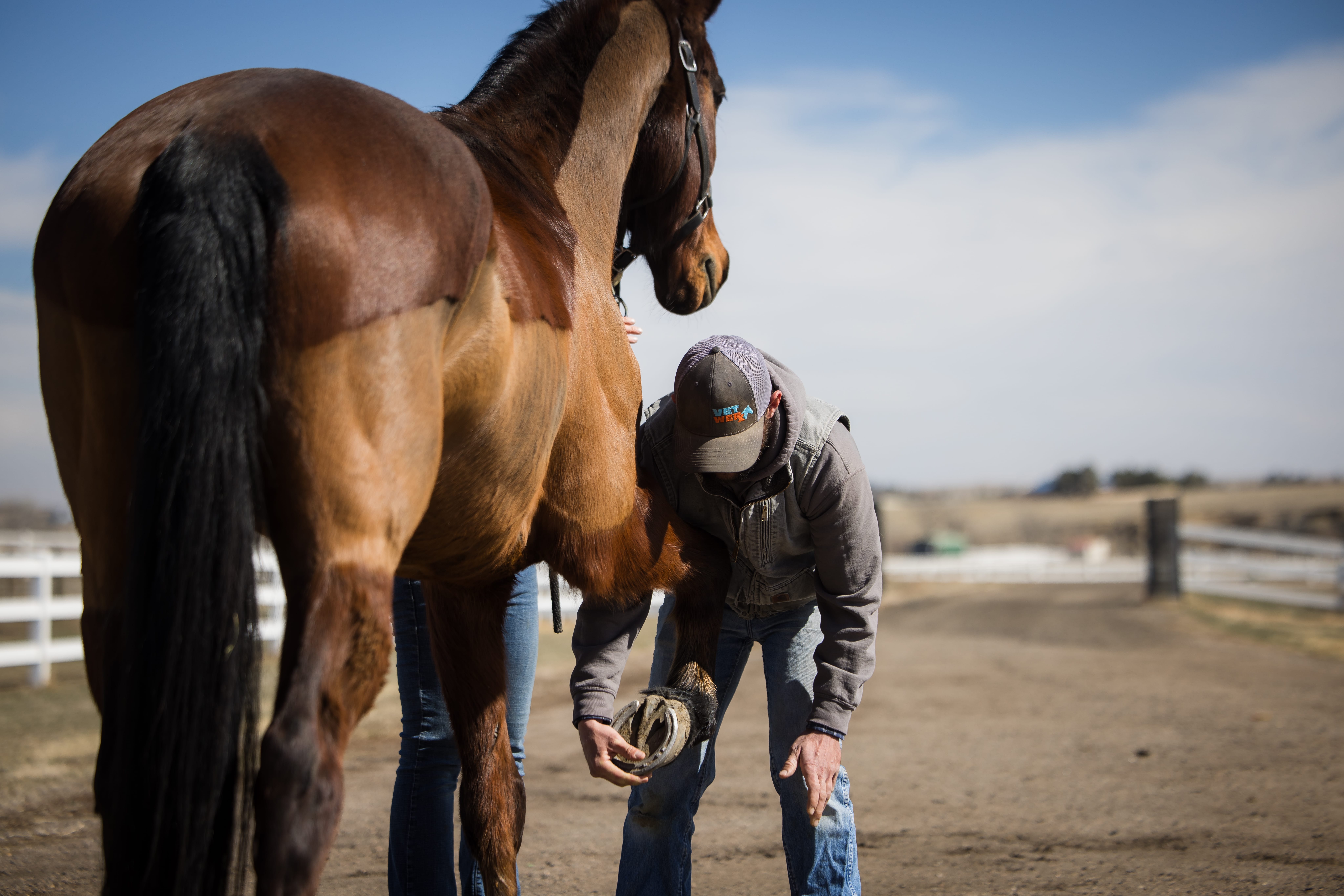Veterinarians: Get our equine treatment guide for dosage, mode of action, case selection, case management, and post injection care.
Resources and
Education
HEALTH EXCELLENCE


Arthramid Resources
We have a global team of experienced veterinarians who have now treated thousands of cases. Arthramid has a wide variety of documents to help you and your practice learn more about the product and treatment. Download one of our resources or browse our wide range of case studies, instructional videos, and news articles.
Please feel free to contact us to answer any questions you may have on case selection, case management, or the clinical application of Arthramid.
Arthramid Tech Documents
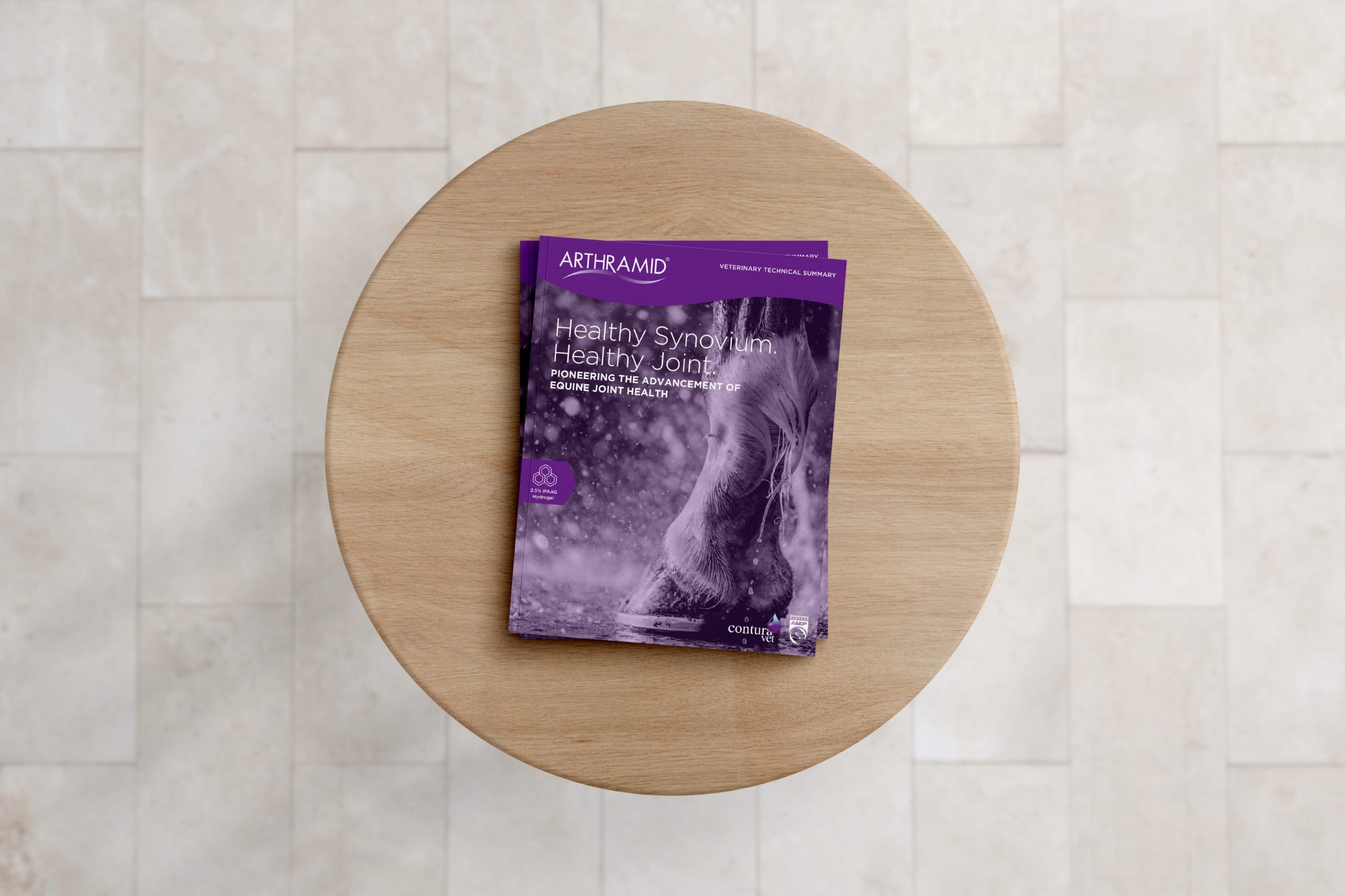

CANINE TECHNICAL BULLETIN
Veterinarians: Get our canine tech bulletin with case studies, guide for dosage, mode of action, case selection, and case management.
Arthramid Consumer Brochures
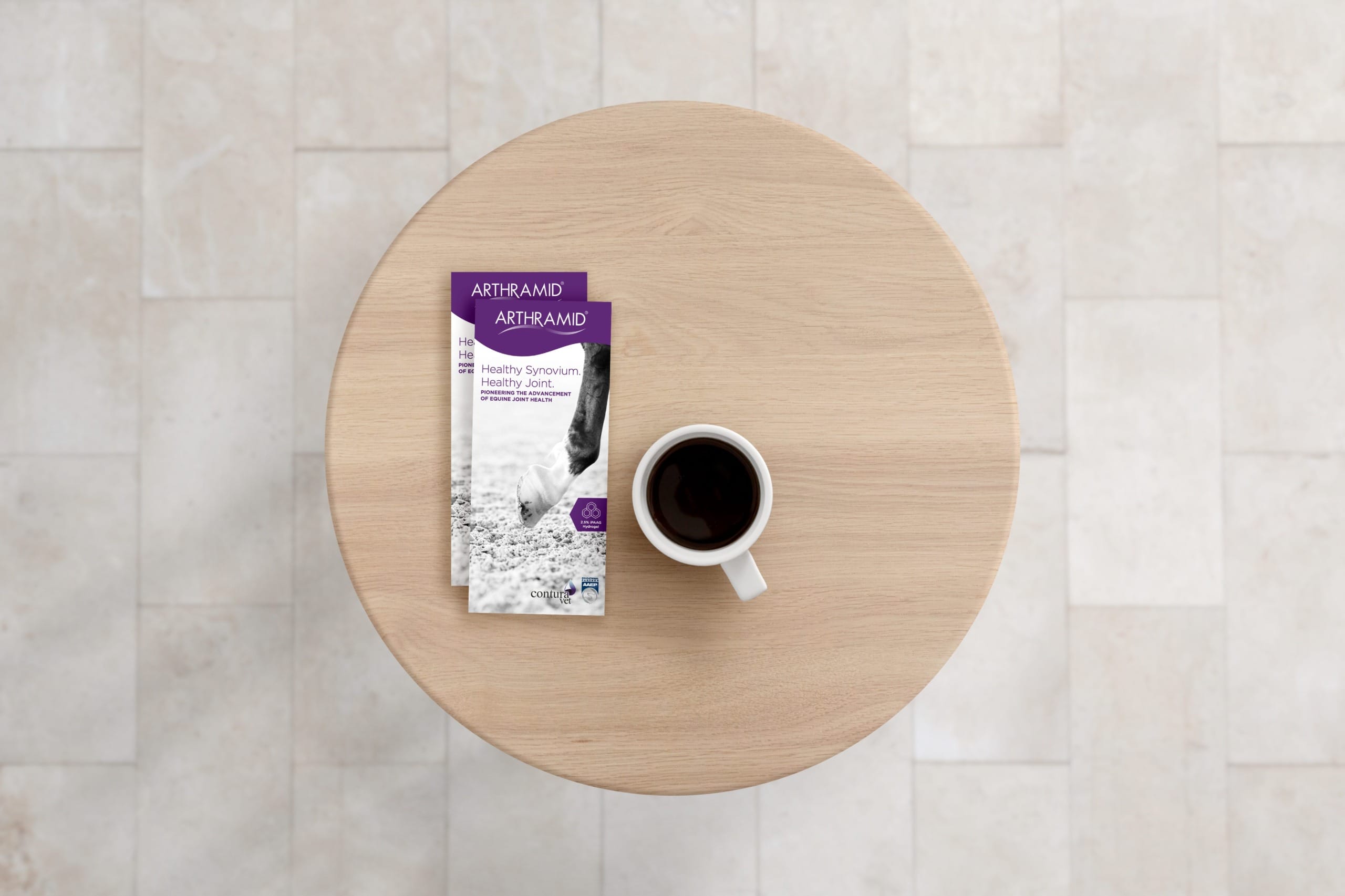
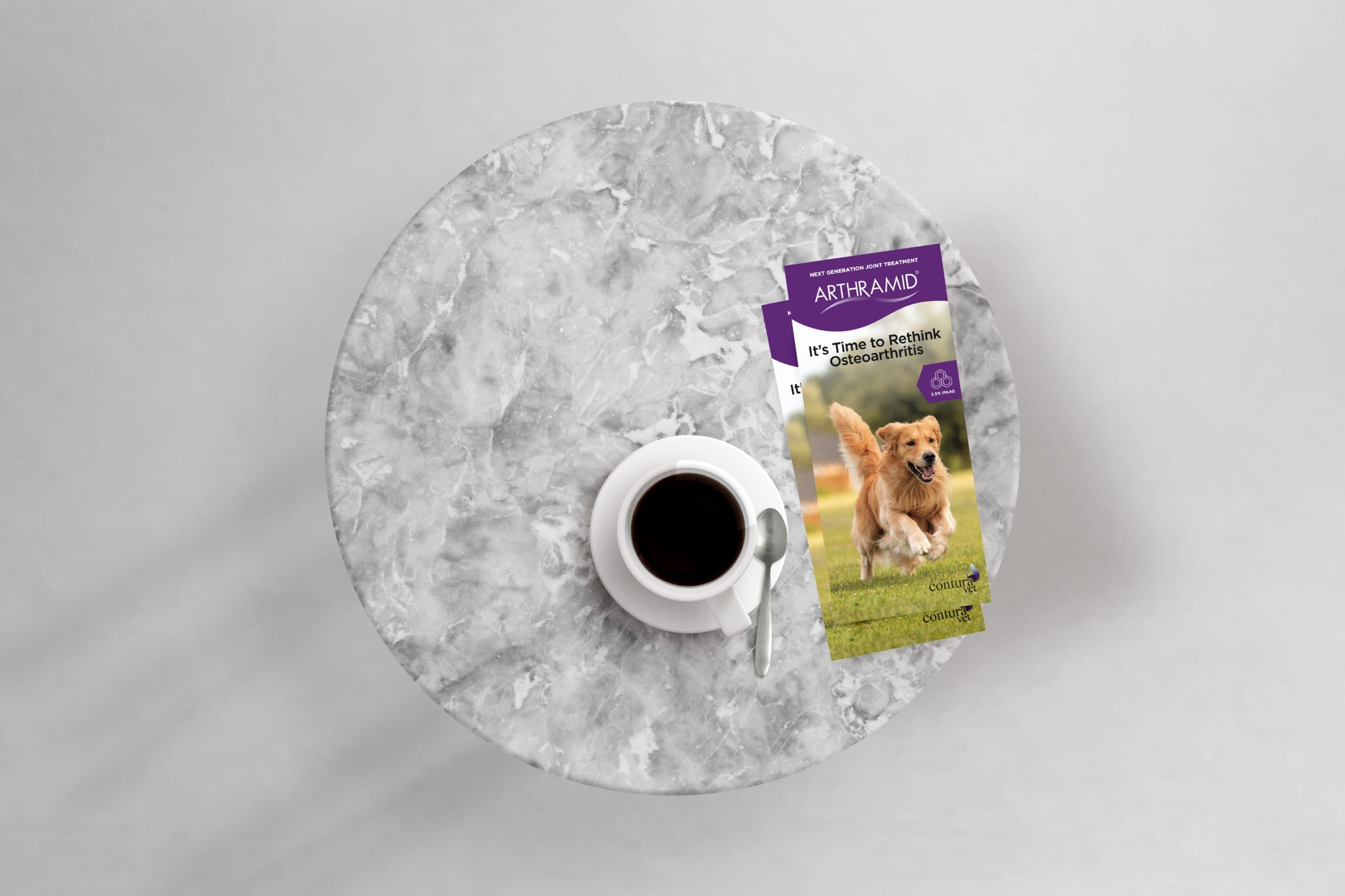
HORSE OWNER BROCHURE
Horse owners and trainers: an introduction to Arthramid for horse owners and trainers. The key facts about this pioneering treatment for joint lameness and what to expect.
DOG OWNER BROCHURE
Dog owners: an introduction to Arthramid and Osteoarthritis (OA). How to spot OA in your dog, who’s at risk, introducing Athramid, and post-treatment care.
Explore Arthramid Videos


Want to learn more? Watch canine injection demonstration videos

About the Arthramid Product
Arthramid is a biocompatible 2.5% cross-linked polyacrylamide hydrogel for intra-articular injection in animals. Arthramid consists of 2.5% cross-linked polyacrylamide and 97.5% water for injection. The hydrogel is supplied in a sterile pre-filled 1 mL syringe sealed with a Luer lock fitting and is injected directly into the joint.
Arthramid hydrogel restores the elasticity of the joint synovium. Arthramid is used to treat non-infectious causes of joint lameness in animals, including both early and late stages of osteoarthritis (OA), through its action on the synovial membrane.
Understanding the complexity of disease processes associated with joint pain remains a constant challenge in clinical practice and as with any disease process, an accurate diagnosis is essential. Arthritis describes the inflammation of a joint and can occur after single or repetitive episodes of trauma. The term incorporates synovitis, capsulitis, sprain, intra-articular fractures, meniscal tears and osteoarthritis (OA). These pathological conditions are described as ‘a group of overlapping distinct diseases which may have different aetiologies, but with similar biologic, morphologic, and clinical outcomes.’
Although conventional concepts of OA emphasise the direct and predominant involvement of cartilage and bone in OA development, it is increasingly recognised that the synovium is key to the central pathophysiological event of cartilage matrix depletion. In fact, it is now increasingly recognised that synovitis is the single most important factor that results in the pain of OA and lameness.
Arthramid can be used in any synovial joint that is displaying clinical signs of osteoarthritis such as reaction to flexion, synovitis, effusion, lameness that responds to intra-articular analgesia, and those with abnormal joint findings detected using diagnostic imaging modalities such as radiology, ultrasonography, scintigraphy, CT, or MRI. It is recommended for use as early as possible in the OA disease process (e.g. synovitis and capsular stiffness), but is also highly effective in severe or chronic cases
It is essential that analysis of data of ongoing infection, concomitant medication, surgery or potential fracture is reviewed prior to injection to prevent possible infections or use of the product for conditions other than for which it is indicated. Arthramid has a non-pharmaceutical mode of action so is also suitable in patients where other products may be contraindicated.
Following treatment, animals should be rested for 48 to 72 hours. After this time, the animal can return to exercise concomitant to its degree of lameness until a response to treatment is seen — typically 2-4 weeks after treatment.
Training or exercise modification to accommodate the degree of lameness and the disease process being managed should also be considered. In horses, the use of alternative training methods such as swimming, water treadmills and dry treadmills are encouraged during the tissue integration phase (2-weeks) and may offer better long-term results. In dogs, controlled exercise such as leash walking for 2 weeks is recommended, slowly increasing the duration as advised on clinical response.
Animals will typically show a gradual reduction in lameness from the first week after treatment and a concurrent reduction in reaction to passive flexion. After 4 to 6 weeks, no further improvement is expected, and re-examination at that time is indicated to either administer a second top-up dose in those that have partially responded (around 10-15% of cases, depending on dosage) or to reassess the accuracy of the diagnosis.
It is important for owners to understand this time lag for a treatment effect to be seen as this contrasts with most conventional therapies. For this reason, and the long-lasting benefits seen, it is also reasonable to consider treating the animal during periods of reduced exercise demands or earlier in the animal’s training programme than normally considered.
Arthramid can be used concurrently with other medications (2.5% iPAAG is permeable to salts and organic molecules), therefore veterinarians may still consider using other IA medications, including OrthoBiologics or corticosteroids, for example when a more immediate reduction in acute inflammation is required. Concurrent use of NSAID’s with Arthramid may also be useful and carries no contra-indications.
Arthramid must be stored protected from direct sunlight at room temperature (below 25 degrees Celsius). Do not freeze. Do not store unsealed syringes for later use. Arthramid has a 3-year shelf life from date of manufacture; always check package expiration date before use.
See owners page for more details. The owner of the animal should be informed about the indications, expected results, contraindications, precautions, warnings, and potential complications. The owner of the animal should be advised that in the case of post-application complications, the veterinarian who performed the Arthramid injections should be contacted immediately for necessary treatment.
Additional Arthramid Educational Resources
Arthramid Testimonials

– DOHA, QATAR


– VIC, AUSTRALIA






– NEW ZEALAND
Talk to us for more information
Contact Us


